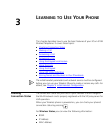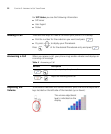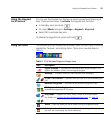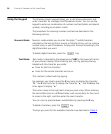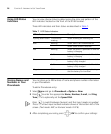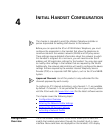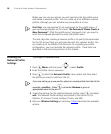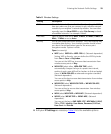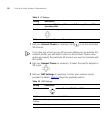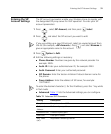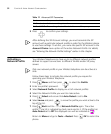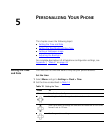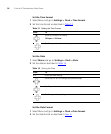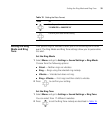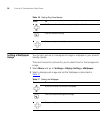
Entering the Network Profile Settings 29
6 Edit your IP Settings as necessary. Table 9 lists the available options.
Table 8 Wireless Settings
Setting Description
ESSID Stands for Extended Service Set Identifier. Specifying the ESSID is
how you make sure that you connect to your wireless network
instead of your neighbor’s network by mistake. You can either
manually input the New ESSID or select Site Survey to check
all available networks. For example: Default.
Data Rate Select a specific data rate 1 Mb/s, 2 Mb/s, 5.5 Mb/s, 6 Mb/s, 9
Mb/s, 11 Mb/s or set as Auto.
Security Acts as your usage permission passport. This is an effective way
to achieve data security. Your network provider should inform
you about the authentication types for the access point
encryption modes. Options include:
Open (no security)
■ WEP (select WEP-64 or WEP-128 bit) (Network dependent)
Setting WEP as Security, you can define the WEP Key Index
from One to Four in Key Index.
You can set the WEP key to ensure data transmission from
wireless access points in Key.
■ WPA-PSK (select either WPA-PSK TKIP, which
automatically changes the keys at a preset time interval,
making it much more difficult for hackers to find and exploit
them, or WPA-PSK AES as advanced encryption standard)
(Network dependent).
You can set the key to ensure data transmission from wireless
access points in Key.
■ WPA2-PSK (select WPA2-PSK TKIP or WPA2-PSK AES )
(Network dependent).
You can set key to ensure data transmission from wireless
access points in Key.
■ WPA (select WPA TKIP or WPA AES ) (Network dependent).
■ WPA2 (select WPA2 TKIP or WPA2 AES ) (Network
dependent).
You can set the key to EAP (MD5, GTC, MSCHAPv2, LEAP,
TLS or TTLS), Identity, User Name, Password, CA Cert.,
User Cert. and Private.



